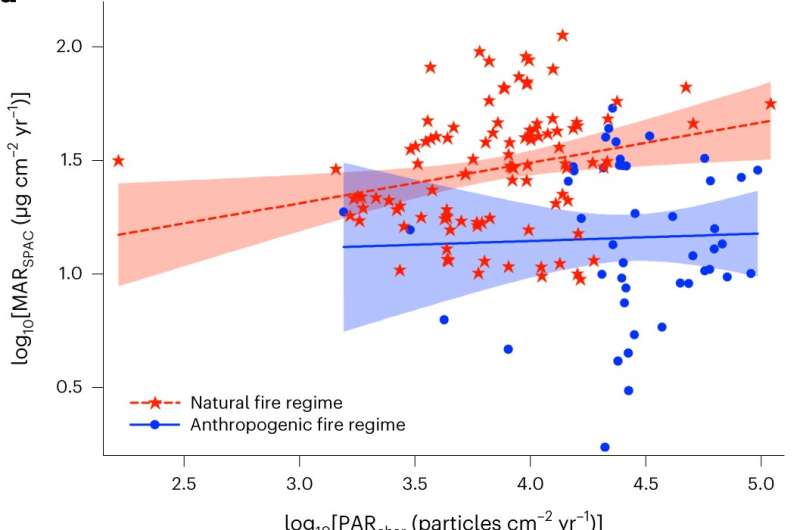This article has been reviewed according to Science X's editorial process and policies. Editors have highlighted the following attributes while ensuring the content's credibility:
fact-checked
peer-reviewed publication
trusted source
proofread
Indigenous fire management started 11,000 years ago, finds study

James Cook University researchers have discovered Indigenous fire management in northern Australia was being practiced at least 11,000 years ago—and it has implications for fire management practices today.
JCU's Distinguished Professor Michael Bird from the Australian Research Council Center of Excellence for Australian Biodiversity and Heritage led the study, which is published in Nature Geoscience.
He said one reason catastrophic fires are increasing in Australia is thought to be the cessation of Indigenous fire management following European arrival. This change has caused biodiversity declines and a build-up of fuel loads.
"Indigenous fire management in tropical savannas is now thought to have been essential for maintaining the landscapes and biodiversity across northern Australia that were considered 'natural' at European arrival.
"In the absence of Indigenous fire management—a complex process that involves strategically burning small areas throughout the dry season—savanna fires have tended to revert to the larger, higher-intensity, late dry season fires that likely existed before people when lightning was the sole source of ignition," said Professor Bird.
He said the scientists took an 18-meter sediment core from Girraween Lagoon on the outskirts of Darwin, developed detailed pollen records of vegetation and charcoal, and paired them with geochemical records of climate and fire to reveal how fire patterns have changed.
"The Girraween record is one of the few long-term climate records that covers the period before people arrived in Australia 65,000 years ago, as well as after.
"This unique coverage provides us with the hard data indicating when the natural fire regime of infrequent, high-intensity fires switched to a human-managed one of frequent, low-intensity fires," said Professor Bird.
He said the 150,000 year old sedimentary record shows Indigenous fire management in northern Australian savannah began by 11,000 years ago, and potentially earlier.
"The rapid change to a European fire regime with more large, intense fires occurring late in the dry season abruptly regressed patterns to the pre-human norm. This ecosystem-scale shock altered a carefully nurtured biodiversity established over tens of thousands of years and simultaneously increased greenhouse gas emissions," said Professor Bird.
He said reversing these trends in Australia's tropical savanna requires re-establishing an Indigenous fire regime through projects such as the West Arnhem Land Fire Abatement managed by Indigenous land managers.
More information: Michael I. Bird et al, Late Pleistocene emergence of an anthropogenic fire regime in Australia's tropical savannahs, Nature Geoscience (2024). DOI: 10.1038/s41561-024-01388-3
Journal information: Nature Geoscience
Provided by James Cook University


















